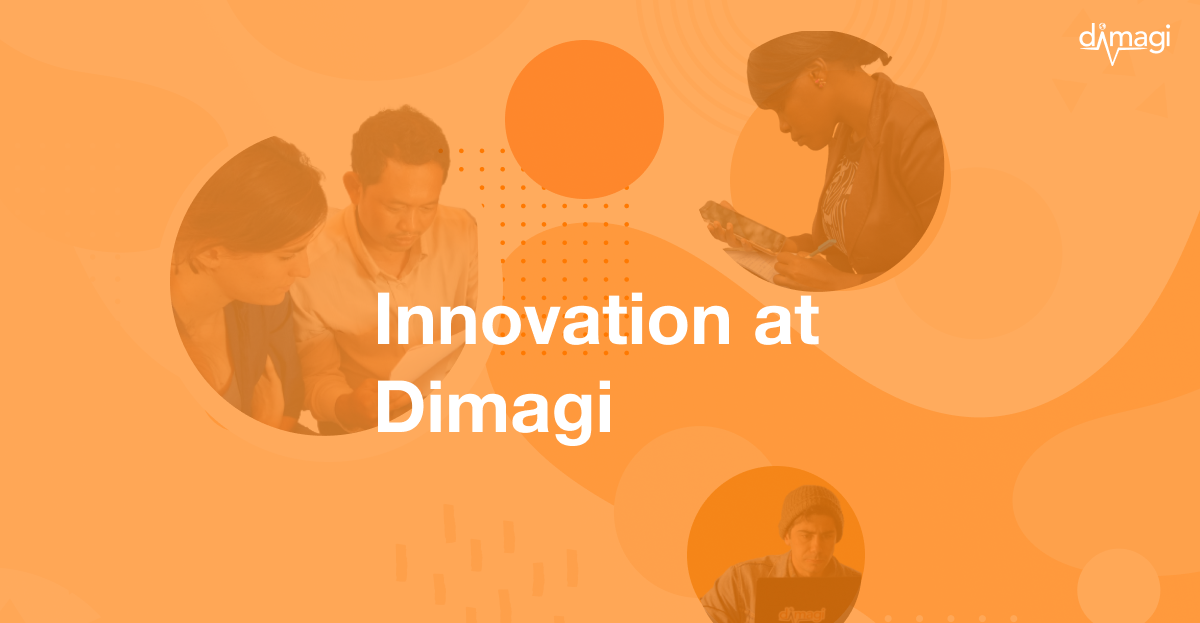Innovation at Dimagi, Part 7: Rapidly Assess Pricing With the Van Westendorp Pricing Model

In this series, Dimagi’s Co-Founder & CEO Jonathan Jackson (@jonathanleej) and Senior Director of New Business Shabnam Aggarwal (@shabnamaggarwal) discuss how we continue to look for ways to innovate with the help of a dedicated entrepreneur within the company.
In this piece, Shabnam explains our team’s approach to determining price sensitivity.
Step 4 in our innovation lifecycle is determining price sensitivity. It serves as a key input into:
- a viable business model,
- the potential customer’s willingness to pay,
- and the total addressable market.
When a product only exists in our heads, it is very difficult to assess our customers’ willingness to pay. How can they assess the value we are proposing without seeing an actual demo of the product? This is especially true when bringing a new product to a market that does not currently use any competitive tool—the market has no idea what to compare it against.
But we still need some way to develop an early model of our customers’ price sensitivity. At Dimagi, we use a methodology called the Van Westendorp Price Sensitivity Meter, which allows us to rapidly gain feedback from potential customers to find an early signal on willingness to pay.
Before we started building Focus, we wanted to run this methodology.
First, we began internally by asking our fantastic and deeply experienced Solutions Delivery team to offer their feedback on the idea and the survey, both in terms of framing as well as their own thoughts on price sensitivity in the market. Then, we posted a blog discussing our exploration of the mobile device management (MDM) market where people could then access a low-cost MDM Competitor Matrix after passing through a lead-gen email wall.
Having generated some genuine interest, we reached out to those same individuals, as well as a number of our existing partners, to see if they’d be open to completing our short survey.
Fortunately, this market is a very collaborative one, and we have amazing partners who were very willing to give us quick survey data around MDM value. This seemed like a good sign that the topic of MDM resonated with our current customer base of CommCare, whom we thought would be potential customers of the MDM solution.
Along with some other market research questions, we asked the following four questions and were able to quickly gather 15 responses from our existing customer base:
- At what price would you begin to think this type of tool is too expensive to even consider? (at $USD/device/month)
- At what price would you begin to think this tool is getting expensive, but you still might consider it?
- At what price would you begin to think this type of tool is so inexpensive that you would question the quality and not consider it?
- At what price would you think this tool is a great deal for the money?
And then charted the answers according to the Van Westendorp method.
We referenced this article and took the below pointers to calculate the viable price points at the intersections of the graph:
“For some survey questions, we need derived data points. Create inverse Cumulative Frequency for Expensive data points as Not Expensive, for Not Cheap(Bargain) data points as Cheap, and for Too Cheap.
Plot the graph for all the data points and label as below:
- Point of Marginal Cheapness (PMC): the lower bound of an acceptable price range at the intersection of the Too Cheap and Expensive lines
- Point of Marginal Expensiveness (PME): the upper bound of an acceptable price range at the intersection of Too Expensive and Cheap lines
- Indifference Price Point (IPP): intersection of Expensive and Cheap lines
- Optimal Price Point (OPP): intersection of Too Cheap and Too Expensive lines
Based on this approach, we found a viable price range of roughly $.50 cents/device at the lower end and $1/device at the higher end. These estimates then served as the first two pricing tiers in our business model, with a third, higher price that we could introduce later with additional enterprise features.
We did subsequently have many more customer discussions as we developed the product, ran pilots, and ultimately brought it to market. But this early pricing data proved to be remarkably durable and was consistent with pricing feedback we got as the product went from an idea in our heads to a concrete solution.
Learn more about the stages of the innovation lifecycle here.
Catch up on the rest of the Innovation at Dimagi series, including the last one, where Dimagi CEO Jonathan Jackson explains how we evaluate our new projects and revisit them often.
Share
Tags
Similar Articles
Dimagi to Exhibit and Host Advanced CommCare Training at ICT4D Conference 2024
Join Dimagi at ICT4D Conference 2024. Sign up for Advanced CommCare Training & engage in impactful discussions on digital development.
Staff Blog
February 22, 2024
CommCare Research Grant Awardee One Year Checkin: Move Up Global | Winner
Celebrate the one-year anniversary of the CommCare Grant for Frontline Research with insights from Move Up Global, the first-place winner, whose study in rural Rwanda focuses on non-biomedical parameters of neglected tropical diseases (NTDs) and malnutrition among school-aged children to improve diagnosis, management, and case surveillance through community health workers and schools.
Staff Blog
February 21, 2024
Design Thinking: Unleasing the Power of Empathy
Being mindful and aware of deep insights Applying creative thinking, discovering new sights Exploring the boundaries of realm of art With innovation and design, to create something from start Design thinking, this creative mission We open our minds, for a whole new vision Fostering our skills, to a wiser design Solving problems, more easily to
Staff Blog
January 25, 2024